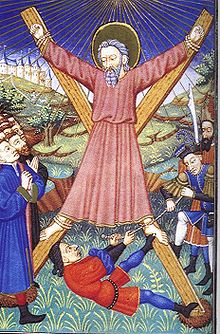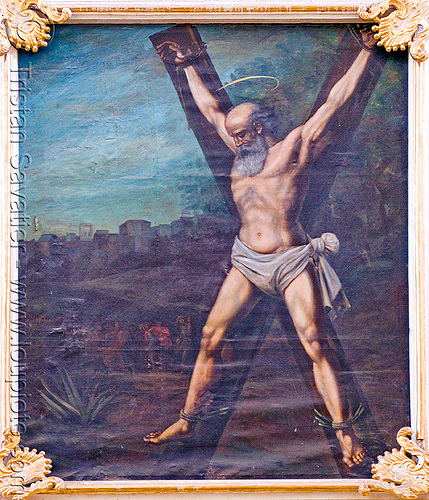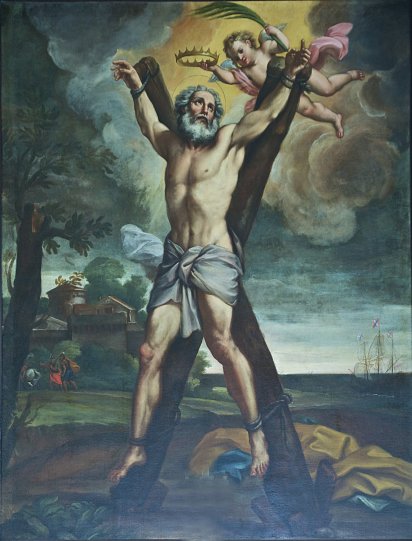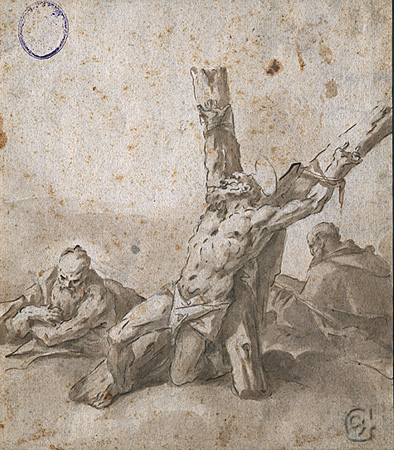Some may argue that this is just splitting hairs. The Greek letter tau has a numerical value of 300. Nevertheless other evidence from Clement of Alexandria makes clear that he understood the cross to have five points like Justin Martyr and other early Fathers. Five points, you say? Yes, five points because the Cross was saltire (X-shaped) with the fifth 'unicorn' being the main support beam which held up the 'chi' (or 'tav' if you speak/spoke Aramaic) shaped object.
Indeed I have been going through all sorts of images of St. Andrew's martyrdom and marveling at how implausible the physics of this deaths really are. How on earth did the artists imagine that these crosses would ever stand not topple over?
I think you start to get the idea. There is absolutely no way that if any engineer took a plan for any of these structures to a building inspector that their drawing would get approved. In the very second human hands stopped holding these crosses, torture device and martyr would immediately come crashing down.
This is why we hear all the early Fathers make reference to a fifth 'unicorn' horn protruding over the head of the crucified one. In other words the cross was itself raised and affixed onto a stake as various modern attempts to recreate the cross as a recreational device will show:
I will produce all the Patristic evidence shortly but the bottom line the reader should begin to see is that the X-shaped cross attached to a column begins to look more and more like the origin for the so-called 'chrismon' or chi-rho cross. Jesus wasn't crucified against a wall so the latter example here isn't applicable. The use of the term stauros implies the cross was suspended in the air. So the obvious example is:
Of course the cross would not have head the head of the letter rho. This is an embellishment to make the cross conform to the first two letters of Chrestos and later Christ. Or perhaps better, we can draw from similar shaped objects in our everyday lives to make the point:
The major difference of course is that Jesus's cross had the main beam extending much higher above his head to give it the 'unicorn' shape referenced so many times in the writings of the earliest Fathers. Perhaps more like this:







































































